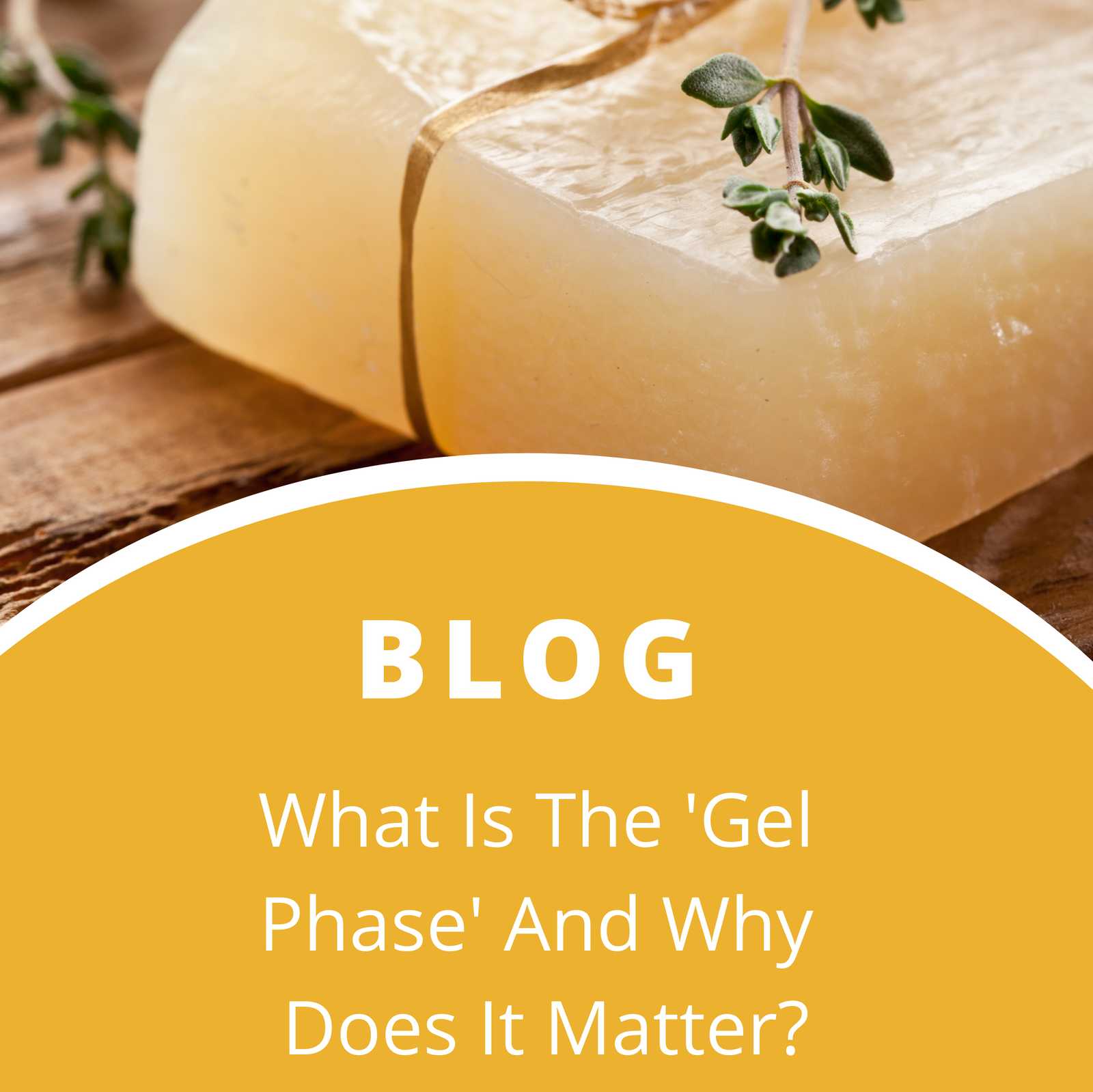best way to make soap ·
cold process soap ·
gel phase ·
handmade soap ·
hobby ·
hot process soap ·
how to make soap ·
learn soap making ·
learn to make soap ·
make your own soap ·
natural soap ·
partial gel ·
soap making ·
soapmaking ·
1 comment
·
What is 'gel phase' and why does it matter?

What is gel phase?
How do I know if my soap has gelled?
How do I control if it gels or not?
Gel phase is caused by the heat generated during the saponification process - ie the chemical reaction between the lye and the oils. As the reaction occurs, the heat builds up and the soap begins to change in appearance. If you touch the outside of your mould you will be really surprised to feel how warm it is. It can reach 180 degrees fahrenheit during this stage. During the saponification process if your soap gels you will see it change from the opaque batter you pour into your mould to an almost translucent gel before settling back to something you will recognise as a bar of soap.
Gel phase is not inevitable, far from it - there are ways and means of controlling what happens once your soap is in the mould and whether or not you choose to do so will depend upon what you are trying to achieve.
Does gel phase matter?
Well not really in so much as it will not impact on the final soap quality - you will have exactly the same product whether your soap gels or not but if you have used colourants it will affect the final colour. and this is where you may decide to regain some control over the process. Gel phase tends to intensify your colours so many soap makers like to ensure their soap gels to take full advantage of this benefit. It can be the difference between a muted, pastel shade and one that 'pops'.
It is also possible to get a partial gel meaning your soap may gel on the inside but not the outside - this can give a circle in the centre of your soap that is a different colour shade to the outside - it is purely aesthetic and has no impact on the final product at all.
When I teach my workshops I do touch on the subject of gel phase - it is hard not to to be honest as inevitably the soap made during the session will have begun to gel by the time it is boxed up and ready to go and the difference is very apparent from when the batter is first poured in to the mould.
The picture below shows the soap about an hour into the saponification process. It is clear to see the centre is much darker and slightly translucent with with outside still lighter coloured and opaque.

How can you control whether or not your soap gels?
There are some scenarios where you would not want your soap to gel, for example if you are making soap with milk or honey - the high temperatures could cause scorching. If you are using an ingredient such as honey the temperatures will be higher anyway due to the sugar content and gel phase will would not be helpful.
Alternatively you may decide to go for muted colours and again, avoid gel phase all together. There are a couple of options available to you to achieve this.
- keep your working temperatures much lower from the outset, aim for 80 to 90degrees fahrenheit.
- do not wrap your soap, cover it with a lid or use a heat mat.
- do not be tempted to use too high a water reduction - this one is a juggling act as the water reduction will help reduce the risk of soda ash but increases the risk of gelling as it will get hotter. Experience will help you over time with this one.
- Some soapers may even put their soap in the fridge or freezer once in the mould to ensure it does not gel.
Conversely you can take steps to ensure your soap gels throughout.
- Soap at a higher temperature, 120 degrees fahrenheit is fine.
- Use a water reduction - 26/27%
- Pop your soap in a box and wrap it in a towel for 24 hours.
- Use a heat mat.
- Pop it in a warm oven (recommended temps and methods vary but I would aim for about 120 degrees f and work up from there if you need to, switch it off but leave your soap in the oven with the door shut. I have not ever felt the need to use this method but it is another option that is open to you.
Ultimately it is very much a personal preference, in my classes we tend to use a range of natural colourants so I always suggest my students bring a towel along with them and we wrap the boxed soap up before they leave to ensure the soap does gel and we get lovely colours but much will depend on your ambient temperature as well as the ingredients you are using.
Wow thank you so much for the above information. Just started making soap and the information is well needed.
Leave a comment